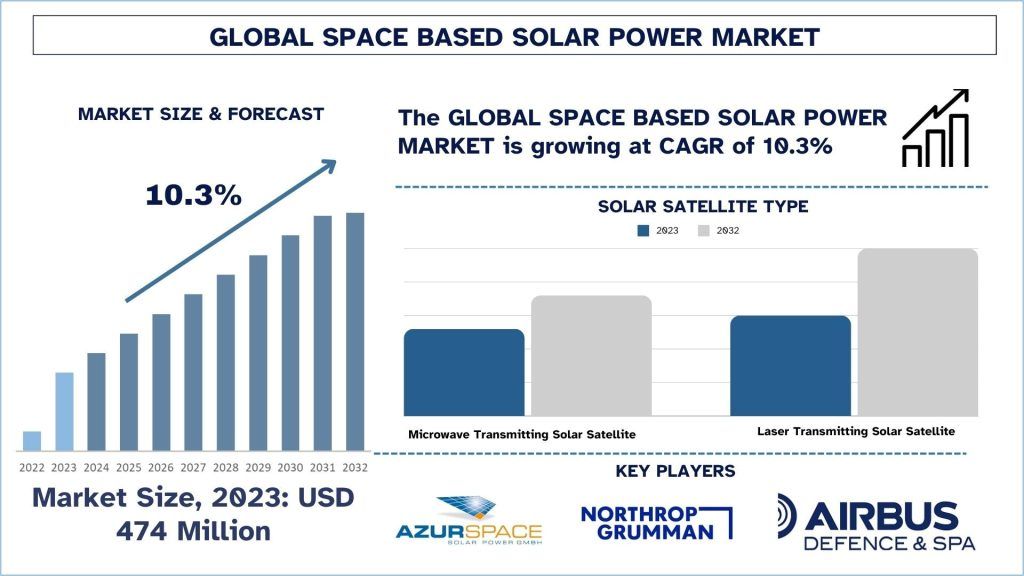宇宙太陽光発電市場:現状分析と予測(2024年~2032年)
太陽衛星型(マイクロ波伝送型太陽衛星、レーザー伝送型太陽衛星)に重点を置く;用途(発電、宇宙用途);地域/国
宇宙太陽光発電市場の規模と予測
宇宙太陽光発電市場は、2023年に4億7,400万米ドルと評価され、予測期間(2024年~2032年)中に約10.3%の力強いCAGRで成長すると予想されています。宇宙太陽光発電パネルは、宇宙で太陽エネルギーを収集し、それを無線で地球に送信するものです。宇宙太陽光発電パネルの技術プロセスには、太陽光を太陽電池パネルに当てる反射鏡または膨張式ミラーを用いて宇宙で太陽エネルギーを収集し、マイクロ波またはレーザーを介して地球上に放射することが含まれます。宇宙太陽光発電パネルの主要企業は、宇宙のエネルギーを活用するために様々な取り組みを行っています。例えば、2021年、中国は、2035年までにエネルギーを地球に送り返すために、マイル単位の太陽電池パネル群を宇宙に打ち上げる計画を明らかにしました。宇宙太陽光発電は、日中しか発電できない屋根の上の太陽電池パネルとは異なり、1年の99%で1日24時間連続して発電できるという利点があり、宇宙太陽光発電市場の需要をさらに加速させています。
宇宙太陽光発電市場の分析
世界の宇宙太陽光発電(SBSP)市場は、持続可能なエネルギーソリューションのための画期的な技術として登場しています。SBSPは、太陽光が豊富で途切れることのない宇宙で太陽エネルギーを収集し、それを地球に送信するものです。宇宙太陽光発電は、継続的でクリーン、かつ無尽蔵なエネルギー供給を提供する可能性を秘めた革新的なアプローチであり、地上の太陽光発電システムの多くの制限を克服し、宇宙太陽光発電市場の市場規模をさらに拡大させます。
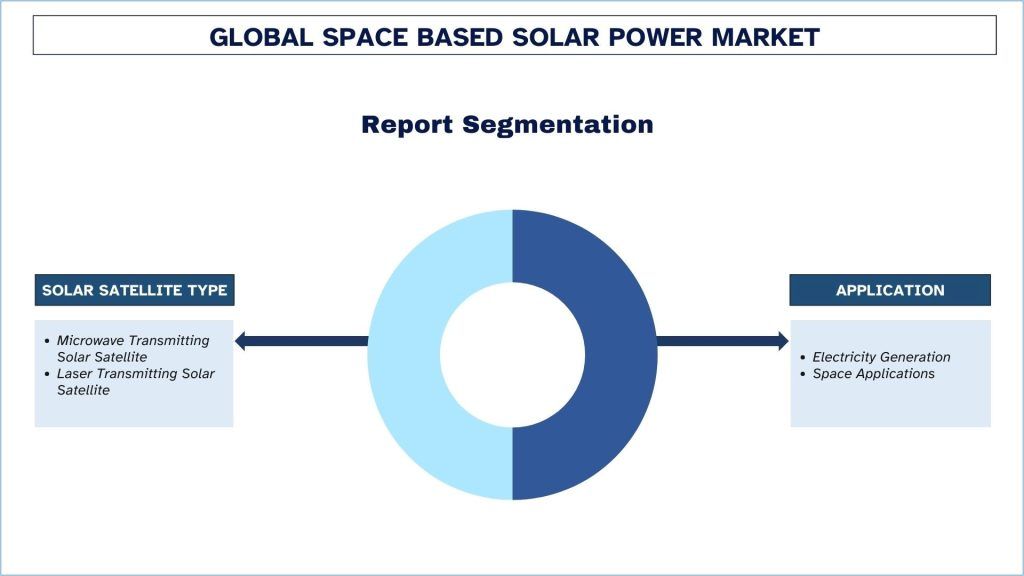
宇宙太陽光発電市場の動向
無線電力伝送技術の進歩
宇宙で収集された太陽エネルギーを効率的に地球に伝送することは、SBSPシステムの実現可能性にとって非常に重要です。この傾向には、マイクロ波およびレーザーベースの電力伝送方法の両方の革新が含まれており、損失を最小限に抑えながらエネルギー伝送効率を最大化することを目指しています。例えば、2022年12月、JAXAはマイクロ波電力伝送試験に成功し、SBSP技術における重要なマイルストーンとなりました。この試験では、同機関はマイクロ波ビームを用いて55メートルにわたって1.8キロワットの電力を伝送しました。この実験は、太陽エネルギーをマイクロ波エネルギーに変換し、それを高い効率で指定された受信機に伝送することの実現可能性を実証しました。
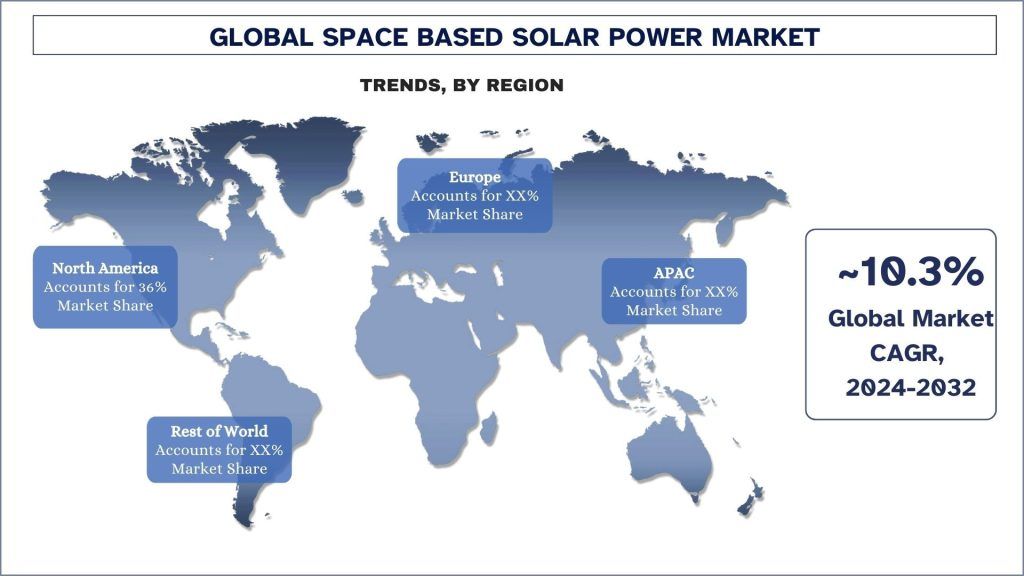
北米は予測期間中に大幅なCAGRで成長すると予想されています
持続可能で継続的なエネルギー源の探求は、私たちの地球上の領域を超えた革新と探求を推進してきました。この分野における先駆的な進歩の中で、宇宙太陽光発電(SBSP)があります。この革新的なコンセプトは、特に北米において、各国や企業がクリーンエネルギーに対する需要の拡大に対応しようとしているため、大きな注目と投資を集めています。SBSPは、太陽の無尽蔵のエネルギーを宇宙から直接利用することを約束し、従来の地上設置型太陽光発電システムに比べて数多くの利点を提供します。北米がこの未来的なエネルギーソリューションに目を向けるにつれて、世界のエネルギー市場への影響は深く、変革的なものとなります。
宇宙太陽光発電業界の概要
宇宙太陽光発電市場は競争が激しく、細分化されており、いくつかのグローバルおよび国際的な市場プレーヤーが存在します。主要なプレーヤーは、パートナーシップ、合意、コラボレーション、新製品の発売、地理的な拡大、M&Aなど、市場での存在感を高めるためにさまざまな成長戦略を採用しています。市場で活動している主要なプレーヤーには、AZUR SPACE Solar Power、Northrop Grumman、Airbus Defence and Space、China Academy of Space Technology、Borrego、Blue Origin、Airbus、Solaren Corporation、Caltech、European Space Agencyなどがあります。
宇宙太陽光発電市場のニュース
- 2021年、中国は、2035年までにエネルギーを地球に送り返すために、マイル単位の太陽電池パネル群を宇宙に打ち上げる計画を明らかにしました。
- 2022年、JAXAはマイクロ波電力伝送システムの試験に成功し、宇宙から地球への無線エネルギー伝送の実現可能性を実証しました。
宇宙太陽光発電市場レポートのカバレッジ
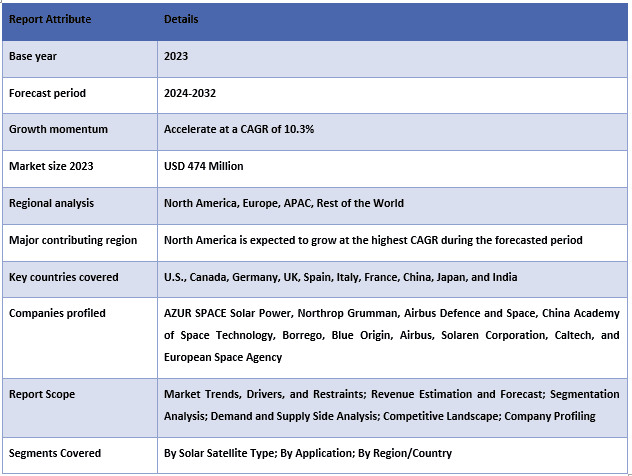
このレポートを購入する理由:
- この調査には、認証された主要業界の専門家によって検証された市場規模の算定と予測分析が含まれています。
- レポートは、業界全体のパフォーマンスの概要を一目で示しています。
- レポートは、主要なビジネス財務、製品ポートフォリオ、拡張戦略、最近の動向に主な焦点を当てて、著名な業界の同業者の詳細な分析を網羅しています。
- 業界で普及している推進要因、制約、主要なトレンド、および機会の詳細な調査。
- この調査では、さまざまなセグメントにわたる市場を包括的に網羅しています。
- 業界の地域レベルの詳細な分析。
カスタマイズオプション:
グローバル宇宙太陽光発電市場は、要件またはその他の市場セグメントに応じてさらにカスタマイズできます。これに加えて、UMIは、お客様独自のビジネスニーズがあることを理解しています。お客様の要件に完全に適合するレポートを入手するには、お気軽にお問い合わせください。
目次
宇宙太陽光発電市場分析(2024年~2032年)の調査方法
世界の宇宙太陽光発電市場の過去の市場を分析し、現在の市場を推定し、将来の市場を予測することは、世界の主要地域における宇宙太陽光発電の導入状況を作成および分析するために行われた3つの主要なステップでした。過去の市場規模の数値を収集し、現在の市場規模を推定するために、徹底的な二次調査が実施されました。次に、これらの洞察を検証するために、多数の調査結果と仮定が考慮されました。さらに、世界の宇宙太陽光発電市場のバリューチェーン全体にわたる業界の専門家との徹底的な一次インタビューも実施されました。一次インタビューを通じて市場規模の数値の仮定と検証を行った後、トップダウン/ボトムアップアプローチを採用して、市場規模全体を予測しました。その後、市場の内訳とデータ三角測量の手法を採用して、業界に該当するセグメントおよびサブセグメントの市場規模を推定および分析しました。詳細な方法論を以下に説明します。
過去の市場規模の分析
ステップ1:二次資料の詳細な調査:
年次報告書と財務諸表、業績プレゼンテーション、プレスリリースなどの企業内部の情報源、およびジャーナル、ニュースと記事、政府刊行物、競合他社の刊行物、セクターレポート、サードパーティデータベース、その他の信頼できる刊行物などの外部の情報源を通じて、宇宙太陽光発電市場の過去の市場規模を取得するために、詳細な二次調査が実施されました。
ステップ2:市場セグメンテーション:
宇宙太陽光発電市場の過去の市場規模を取得した後、主要地域のさまざまなセグメントとサブセグメントに関する過去の市場の洞察とシェアを収集するために、詳細な二次分析を実施しました。主要なセグメントには、太陽光発電衛星の種類と用途としてレポートに含まれています。さらに、その地域におけるテストモデルの全体的な採用状況を評価するために、国レベルの分析を実施しました。
ステップ3:要因分析:
さまざまなセグメントとサブセグメントの過去の市場規模を取得した後、宇宙太陽光発電市場の現在の市場規模を推定するために、詳細な要因分析を実施しました。さらに、宇宙太陽光発電市場の太陽光発電衛星の種類や用途などの従属変数と独立変数を使用して要因分析を実施しました。世界の宇宙太陽光発電市場セクターにおけるトップパートナーシップ、M&A、事業拡大、製品発売を考慮して、需要と供給側のシナリオの徹底的な分析を実施しました。
現在の市場規模の推定と予測
現在の市場規模の算定:上記の3つのステップからの実行可能な洞察に基づいて、現在の市場規模、世界の宇宙太陽光発電市場の主要なプレーヤー、およびセグメントの市場シェアに到達しました。必要な割合シェアの分割と市場の内訳はすべて、上記の二次的アプローチを使用して決定され、一次インタビューを通じて検証されました。
推定と予測:市場の推定と予測では、推進要因とトレンド、制約、および利害関係者が利用できる機会を含むさまざまな要因に重みが割り当てられました。これらの要因を分析した後、関連する予測手法、つまりトップダウン/ボトムアップアプローチを適用して、世界の主要市場におけるさまざまなセグメントとサブセグメントの2032年の市場予測に到達しました。市場規模の推定に採用された調査方法には以下が含まれます。
- 収益(米ドル)の観点からの業界の市場規模、および国内の主要市場全体での宇宙太陽光発電市場の採用率
- 市場セグメントおよびサブセグメントのすべての割合シェア、分割、および内訳
- 提供される製品の観点から見た、世界の宇宙太陽光発電市場の主要なプレーヤー。また、この急成長市場で競争するためにこれらのプレーヤーが採用している成長戦略
市場規模とシェアの検証
一次調査:主要な地域全体のトップレベルの幹部(CXO/VP、営業責任者、マーケティング責任者、運用責任者、地域責任者、国責任者など)を含む主要オピニオンリーダー(KOL)と詳細なインタビューを実施しました。次に、一次調査の結果を要約し、統計分析を実行して、述べられた仮説を証明しました。一次調査からのインプットは二次的な調査結果と統合され、それによって情報が実行可能な洞察に変わりました。
さまざまな地域における一次参加者の分割
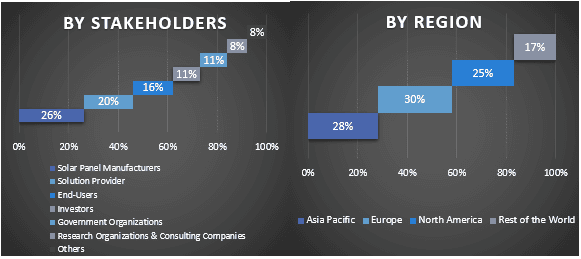
市場エンジニアリング
データ三角測量法を採用して、市場全体の推定を完了し、世界の宇宙太陽光発電市場の各セグメントおよびサブセグメントの正確な統計数値を導き出しました。世界の宇宙太陽光発電市場における太陽光発電衛星の種類と用途の分野におけるさまざまなパラメータと傾向を調査した後、データをいくつかのセグメントとサブセグメントに分割しました。
世界の宇宙太陽光発電市場調査の主な目的
世界の宇宙太陽光発電市場の現在および将来の市場動向は、調査で明確に示されています。投資家は、調査で実施された定性的および定量的な分析に基づいて、投資の裁量を決定するための戦略的な洞察を得ることができます。現在および将来の市場動向は、地域レベルでの市場の全体的な魅力を決定し、最初の参入者の利点から恩恵を受けるために、産業参加者が未開拓の市場を開拓するためのプラットフォームを提供します。調査のその他の定量的な目標には、次のものがあります。
- 金額(米ドル)の観点から、宇宙太陽光発電市場の現在および予測される市場規模を分析します。また、さまざまなセグメントおよびサブセグメントの現在および予測される市場規模を分析します。
- 調査のセグメントには、太陽光発電衛星の種類と用途の分野が含まれます。
- 宇宙太陽光発電の規制の枠組みの定義と分析
- 業界の顧客と競合他社の行動を分析するとともに、さまざまな仲介業者の存在に関連するバリューチェーンを分析します。
- 主要な地域における宇宙太陽光発電市場の現在および予測される市場規模を分析します。
- レポートで調査された地域の主要な国には、アジア太平洋、ヨーロッパ、北米、およびその他の地域が含まれます
- 宇宙太陽光発電市場の企業プロファイル、および急成長市場で生き残るために市場プレーヤーが採用している成長戦略。
- 業界の詳細な地域レベルの分析。
よくある質問 よくある質問
Q1: 宇宙太陽光発電市場の現在の市場規模と成長の可能性は何ですか?
Q2:宇宙太陽光発電市場の成長を牽引する要因は何ですか?
Q3:太陽光発電衛星の種類別で、宇宙太陽光発電市場において最大のシェアを占めるセグメントはどれですか?
Q4: 宇宙太陽光発電市場における新たなテクノロジーとトレンドは何ですか?
Q5: 宇宙太陽光発電市場を支配するのはどの地域ですか?
関連 レポート
この商品を購入したお客様はこれも購入しました

